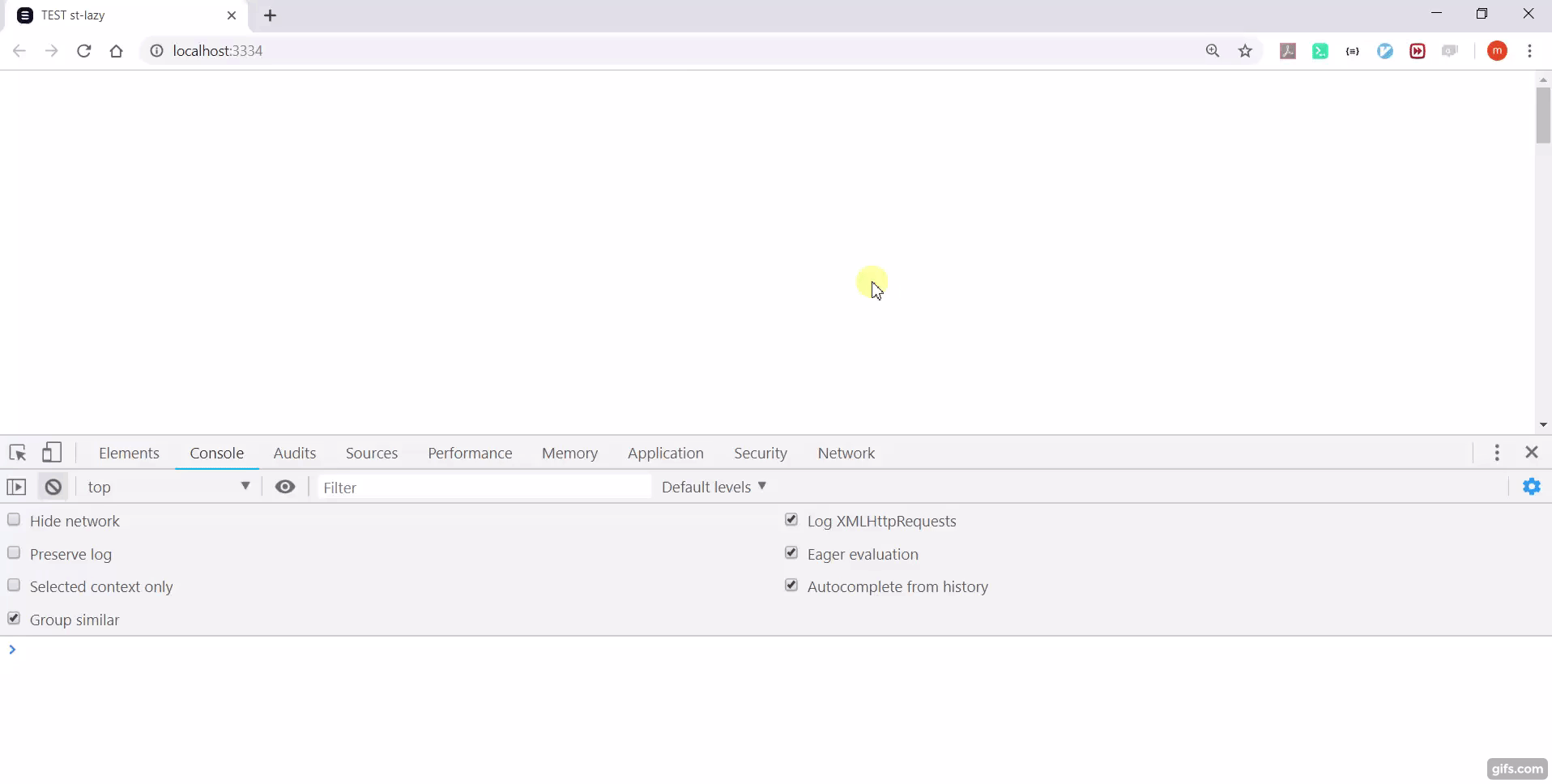lit-element-lazy is a @lazy decorator that allows you to call component method as the user scrolls component into the viewport. On supported browsers (Chrome and chrome based browsers, Firefox and Edge) lit-element-lazy uses IntersectionObserver to accomplish this functionality. For Safari and IE it simply falls back to setTimeout unless you use polyfill.
If you want lit-element-lazy to work everywhere (also on IE and Safari) use polyfill. You can pop this script tag:
<script src="https://polyfill.io/v3/polyfill.min.js?features=IntersectionObserver"></script>
in index.html and that's it:)
Polyfill is not included in lit-element-lazy not to increase the bundle size and to leave the decision to you: either you go with setTimeout fallback or if you prefer, go with polyfill
In your lit-element project, add lit-element-lazy to your package.json:
npm i lit-element-lazy
It's very simple: you just need to anotate your method with @lazy and it will be called when host component is scrolled to viewport. Method will be called once - the first time you scroll to component
import { LitElement, html, property, customElement } from 'lit-element';
import { lazy } from 'lit-element-lazy';
@customElement('simple-greeting')
export class SimpleGreeting extends LitElement {
@property() name = 'World';
@lazy()
lazyCallback() { console.log("lazyCallback was called because user scrolled to lazyComponent"); }
render() {
return html`<p>Hello, ${this.name}!</p>`;
}
}
You can also set margin for @lazy. It determines how far from the viewport lazy loading starts. Can have values similar to the CSS margin property, e.g. "10px 20px 30px 40px" (top, right, bottom, left). The values can be percentages.
@lazy({ margin: "50%" })
someMethod() { console.log("someMethod was called because user scrolled to margin of lazyComponent extended by 50%"); }
or if you want to have it dynamic (as web component @Prop)
@lazyMargin() @property() margin?: string;All web components here have optional margin prop.
Basically you can think of every action that you would normally do with the load of the page/component. Maybe some of those actions are time consuming, generating not needed network traffic and not giving any benefit to most of users? Good example is calling an API to get data to be presented by component. Maybe most of users are not even checking some forgotten carousel on the bottom of every page in your app? Or you need an easy way to implement a listing page with infinie scrolling?
Following component
import { LitElement, html, property, customElement } from 'lit-element';
import { lazy } from 'lit-element-lazy';
@customElement('test-lit-element-lazy')
export class TestLitElementlazy extends LitElement{
@property() name: string;
@lazy()
getName() {
console.log("fetching user data...");
setTimeout(() => {
fetch("https://jsonplaceholder.typicode.com/users/1")
.then(res => res.json())
.then(data => {
this.name = data.name
console.log(this.name);
})
}, 300);
}
render() {
return html`<p>${this.name}!</p>`;
}
}
...on the page
<body>
<div style="height: 1000px"></div>
<test-lit-element-lazy></test-lit-element-lazy>
</body>
gives
lit-element-lazy's People
Recommend Projects
-
 React
React
A declarative, efficient, and flexible JavaScript library for building user interfaces.
-
Vue.js
🖖 Vue.js is a progressive, incrementally-adoptable JavaScript framework for building UI on the web.
-
 Typescript
Typescript
TypeScript is a superset of JavaScript that compiles to clean JavaScript output.
-
TensorFlow
An Open Source Machine Learning Framework for Everyone
-
Django
The Web framework for perfectionists with deadlines.
-
Laravel
A PHP framework for web artisans
-
D3
Bring data to life with SVG, Canvas and HTML. 📊📈🎉
-
Recommend Topics
-
javascript
JavaScript (JS) is a lightweight interpreted programming language with first-class functions.
-
web
Some thing interesting about web. New door for the world.
-
server
A server is a program made to process requests and deliver data to clients.
-
Machine learning
Machine learning is a way of modeling and interpreting data that allows a piece of software to respond intelligently.
-
Visualization
Some thing interesting about visualization, use data art
-
Game
Some thing interesting about game, make everyone happy.
Recommend Org
-
Facebook
We are working to build community through open source technology. NB: members must have two-factor auth.
-
Microsoft
Open source projects and samples from Microsoft.
-
Google
Google ❤️ Open Source for everyone.
-
Alibaba
Alibaba Open Source for everyone
-
D3
Data-Driven Documents codes.
-
Tencent
China tencent open source team.

